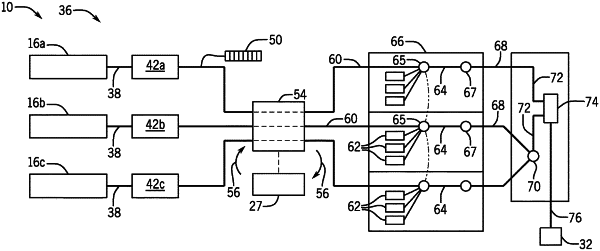| CPC G06F 21/32 (2013.01) [G06F 21/40 (2013.01); G06N 20/00 (2019.01); G06V 40/70 (2022.01)] | 10 Claims |

|
1. A secure computing system comprising:
a set of biometric sensors providing different biometric signals discriminating between different users of the computing system,
the biometric signals providing different levels of entropy related to security, wherein a first and second biometric signal are produced from at least a first and second different biometric sensor each producing a different sensor signal measuring different distinguishing physical characteristics of an authorized user and further including:
a machine-learning processor receiving the sensor signals and mapping the sensor signals to a common machine-learning space having points identifiable by a predetermined vector representation;
a fuzzy extractor receiving the machine-learning vectors describing the points of the common machine-learning space according to the predetermined vector representation and mapping them to corresponding key strings such that different machine-learning vectors map to a same key string when the different machine-learning vectors have a predefined closeness in the machine-learning space and are combined with a corresponding helper string; and
a comparator comparing the key strings to stored key strings to unlock the secure computing system when there is a match between a key string and the stored key strings indicating an authorized user; and wherein the machine-learning processor uses a different set of learning weights for data of each different biometric signal to produce different machine-learning vectors operated on by the fuzzy extractor to provide different key strings and wherein the comparator uses the different key strings corresponding to different stored key strings for each different biometric sensor.
|